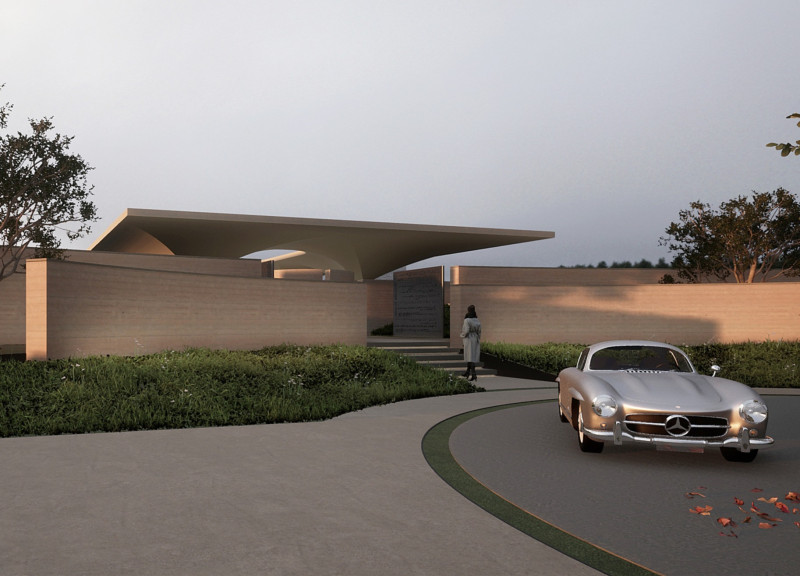5 key facts about this project
Tili Vini is located in the Umbrian valley, a region known for its natural beauty and wine heritage. The design provides a space for wine production and tasting, reflecting the local culture and traditions. The main idea behind the project is to create a connection between the building and the landscape. The structure is set into the earth, allowing for views of the valley and a modern take on classical wine storage.
Integration with Landscape
The design of Tili Vini complements the natural shapes of the Umbrian terrain. By using earth taken from the site, the building merges with its surroundings. This careful placement not only offers views of the picturesque valley but also controls weather elements, making the interiors comfortable. The manipulation of the site creates a strong relationship between the architecture and nature.
Material Selection
Local materials play a key role in the design. The project features soft colored stone, wood, recycled bricks from old buildings, terracotta, local Italian marbles, large stone tiles, rammed earth, cork, hemp, and limestone. These materials are chosen to reflect the region’s character while promoting sustainability. Using these resources helps ensure that the building is visually and structurally connected to the Umbrian landscape.
Sustainability Features
Sustainability is an important part of Tili Vini's design. Green roofs cover guest suites and the central courtyard, adding greenery and reducing the building's environmental impact. The use of rammed earth and concrete takes advantage of their natural insulation properties, which cuts down the need for traditional heating and cooling. Additionally, solar panels provide the building with renewable energy, while a rainwater collection system supports the landscaping, highlighting the project’s commitment to environmental care.
The interior invites exploration and interaction, with spaces designed to encourage conversations about wine. Textures and colors throughout the building mirror the landscape, creating an atmosphere that invites visitors to experience the blend of nature and tradition. The design serves as a celebration of the connection between people, place, and the rich history of wine-making.






















































